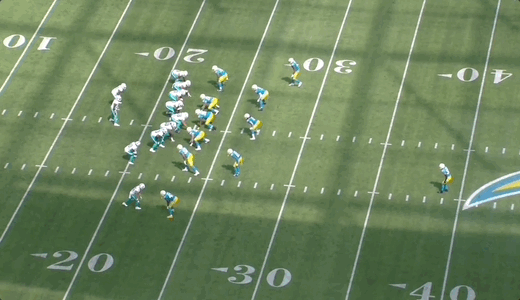There are two sides to the Dolphins’ thrashing of the Chargers defense in Week 1. There’s the combination of talent, speed, and scheme by Mike McDaniel’s offense that made their passing game nearly impossible to stop. And there is also the refusal by Brandon Staley to treat Tyreek Hill like he’s a different receiver.
Hill finished the day with 11 receptions for 215 yards and 2 touchdowns. Tua Tagovailoa threw for 466 yards and wasn’t sacked on 45 pass attempts. The Dolphins scored 36 points and escaped L.A. with a dramatic 36-34 win.
The Dolphins’ motion created problems
It makes more sense to initially focus on what the Dolphins did to create so many open receivers than to focus on what the Chargers did wrong (more on that below). Miami’s scheme itself created a lot of the yards.
We talked this summer about how the Dolphins thrive on using motion in the passing game (here and here). They use it for several reasons. Motion creates free releases for Hill and Jaylen Waddle off the line. This allows the timing of the play to stay in tact, which is critical for taking advantage of Tua’s anticipation skills. It also moves defenders, creating windows for completions. We saw each of these elements at play on Sunday.
The first thing that stood out on the All-22 was the Dolphins’ use of this quick lateral motion to the outside right before the snap. Notice Tyreek Hill align inside before motioning to the perimeter here:
Using this short motion so late before the snap made it difficult for the Chargers defense to adjust. It also ensured that Hill would get a free release off the line, which maintained the timing of the play for Tua:
I don’t care who you have at cornerback. It’s tough to cover Hill when he has a running start and space to maneuver like that.
On this next example, the Dolphins had fullback Alec Ingold run the same motion. They also used an RPO to hold defenders inside. Here, the motion served to create leverage to the perimeter for another big gain:





